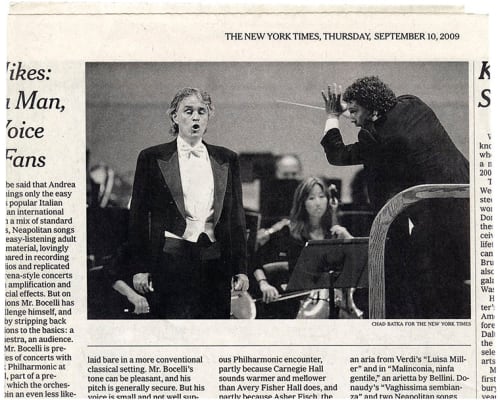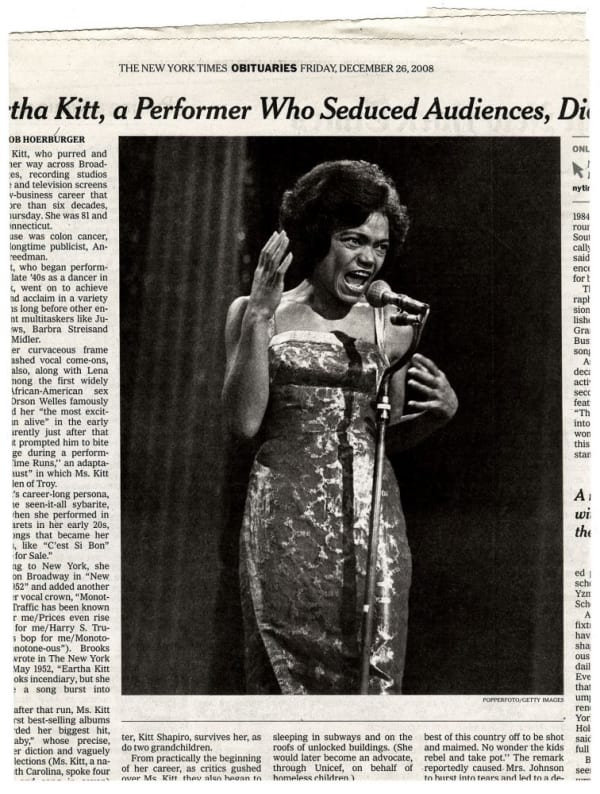Joseph Grigley: Songs, With And Without Words
Deaf since the age of 10, the Chicago-based artist Joseph Grigely (American b. 1956) is interested in how language, both spoken and written, materializes in our lives.
Grigely has been exhibiting his work in sculpture, installation, video, sound, and works on paper—here, a selection of digital prints—since the early 1990s. Songs, With and Without Words can be traced back to New Year’s Eve in Washington, DC, in 1999. While watching TV, the artist came across a televised concert of a choir singing at the Washington National Cathedral. After watching for a while, his partner turned and said in sign language, “The world must look really silly without sound.”
Years later, Grigely began collecting images from The New York Times of performers—photographs that communicate the energy and emotion of a vocalist or musician without sound. He has removed the captions from these newspaper clippings to extend this idea, further isolating the performers from their context. For Grigely, one aspect of this body of work is about attempting to convey a sense of the experience of being deaf.
Grigely offers an exercise: “Watch the news without sound. Watch a concert without sound. Watch a sitcom without sound. Don’t do it for five minutes—do it for an hour. At first, it seems contrived and awkward—and after a while, the contrivance and awkwardness start to get interesting—because these things remind us just how ambiguous the body is when it doesn’t have words to sustain it.”
This exhibition is generously supported by Lucille and Richard F.X. Spagnuolo.Guest curated by Yuri Stone.
Drawing influence from Modernism and still-life paintings, Joseph Grigely, who is deaf, maintains an extensive archive of his daily conversations on scraps of paper and napkins, organizing them into installations of varying sizes. In the case of his “Conversations with the Hearing”, they are placed into rigid grids, evoking Modernist Hard-edged geometry. For Grigely, this “materialization of everyday life” is linked to notions of still-life painting in that both are composed of banal moments or forgettable interactions. Of his work, Grigely says, “I want to take people inside the experience of being deaf and share it with them. At the same time, I want to conflate it with various historical conventions.”




